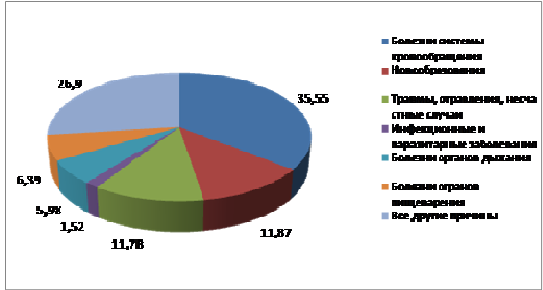Don't miss
Other articles
Almost everyone who has ever been to a cafe, restaurant, canteen at work or gastronomy was tempted by the appetizing look of steaming barbecue, lasagna, ice cream, and had to barely make a choice in favor of a particular dish.
What is so amazing about these blue - green algae and why is it firmly usurped the place of one of the most useful foods? DiningSmart team will gladly tell you all about it.
The truth about the most popular sauce in the world – DiningSmart will tell you everything about mayonnaise in this article!
The daily requirement for vitamins is calculated in milli- or micrograms, butits contribution to our physical and mental well-being is enormous.
Overweight and obesity in Kazakhstan

What is obesity?
Scientifically, obesity – isa chronic disease characterized by excessive accumulation of body fat.Obesity is a major problem and is harmful to the health and well-being of many people including children and significantly increases the cost of health services.Obesity significantly increases the level of morbidity and disability, complicates associated diseases, degrades the quality of life and overall health, and reduces life expectancy.The World Health Organization (WHO), the Food and Agriculture Organization of the United Nations (FAO), the American Medical Association and a number of other international organizations recognized obesity as a disease.
There is a high probability that obese people will face the following diseases:
- Cardiovascular diseases (hypertension, dyslipidemia, atherosclerosis, coronary heart disease, angina, myocardial infarction and stroke).
- Endometrial, cervical, ovarian, prostate, breast, colon, rectum, kidney, liver and gall bladder.
- Type 2diabetes and insulin resistance.
- Osteoporosis, arthritis and gout.
- Chronic respiratory diseases.
- Deep vein thrombosis.
- Formation of biliary and urinary stones.
- Complications of pregnancy and childbirth.
- Disorders of the reproductive function (infertility, ovarian dysfunction and others).
When a woman is obese, during thepregnancy there is a risk that the child weight increases. Childhood obesity leads to both short-term and long-term adverse effects on the physical and psychosocial health; it is an important predictor of obesity among adults and a risk factor for many diseases, including mental illness.Obese children are more likely to get sick and then need treatment for most of their adult life, have lower school performance and low self-esteem, often experience social isolation.
The indicators to measure overweight and obesity is a body mass index (BMI). BMI = body weight / height 2 (kg / m 2). BMI above 25 is regarded as overweight (pre-obese) and above 30 as obese.
Obesity among men and women is different: the prevalence of obesity is higher among women than among men (due to hormonal changes in the body during pregnancy and childbirth, climacteric period).In case of women, most of the fat tissue is deposited in peripheral fat depots, such as the chest, thighs and buttocks, while men deposition of fat tissue is the central character, the greatest accumulation occurs in the abdominal area.For women, in addition to health problems, there is also aesthetic side of the issue, during obesity figure gets unwanted contours and it’s difficult to pick up clothes, so there are psychological problems and low self-esteem associated with it.
As known, heart disease, various cancers are the leading causes of death in our country.
Facts and figures:
- It is proved that overweight reduces life expectancy by an average of 7 years.
- If previously it was said that underweight is a major cause of mortality in the world, now overweight and obesity are often causes of death.
- Overweight and obesity are on the fifth place among the leading causes of death in the world. At least 2.8 million adults die each year as a result of overweight and obesity.
- 44% of the burdens of diabetes, 23% of the burden of coronary heart disease and from 7 to 41% of various types of cancers are associated with obesity and overweight.
- The WHO in 2008 estimates that there were more than 1.4 billion people, older than 20 years - overweight, of which 200 million men and 300 million women were obese.
- Overall, more than 10% of the world's population is obese.
- Particularly disturbing trend is the prevalence of obesity among children and adolescents, which is 10 times higher today than in the 1970s. In 2011, over 40 million children under the age of 5 years were overweight.
- Before these characteristics were common for high-income countries, now overweight and obesity are becoming more common in low and middle income countries, especially in the cities.
- In developing countries, there are nearly 35 million overweight children under the age of 5 years, while in developed - 8 million.
- Since 1980, the number of obese people has doubled. WHO predicts that by 2015, 2.3 billion adults will be overweight and 700 million - obese.
- Obesity can be prevented.
The economic costs of obesity and overweight

The economic damage caused by obesity and overweight is associated with an increase in medical expenses due to an increase in morbidity and mortality from the consequences of obesity, such as cardiovascular disease, diabetes, cancer, and other consequences of obesity: the loss of working days due to illness and lowperformance, which hits the pocket as an employee and employer. Employers have to pay higher insurance and compensation to obese ones because of their higher morbidity than those who have normal weight. Some studies show that the presence of obesity is associated with lower wages, and low-income households.
Although our country has not assessed the damage caused by obesity, foreign researchers estimated that the by 2030 the number of people who are obese, 65 million in the US and 11 million in the UK, the incidence of diabetes will increase by 6,0-8,6 million cases, heart disease and stroke - by 5.7-7.3 million cases, cancer - 492 000-669 000 cases, that takes 26-55 million years lived a full quality life in both countries combined.It is expected that the total medical costs associated with treating these preventable diseases by 2030 will increase by 48-66 billion per year in the US and 1.9-2 billion pounds a year in the UK. At the same time, effective strategies to promote measures to maintain a healthy weight have economic benefits.Other foreign researchers estimated that obesity takes 0.7 - 2.8% of the country health care costs. Moreover, obese people have medical expenses, on average, 30% more than those with normal weight.
The situation in Kazakhstan
Causes of death in Kazakhstan in 2011, in percentage
Data of the Statistics Agency of Republic of Kazakhstan

- According to national surveys in 1995 and 1996 in Kazakhstan, 42% of the adult population (or 4.36 million people) were overweight (27%) or obese (15%). Mostly it affected women (47%) compared to males (42%).
- In 2005, about 9% of children under the age of 5 were overweight or obese. In 2006, the number increased by 11.4%.
- In 2008, one of two women (50.6%) and a slightly smaller percentage of men (45.4%) aged 25-59 years were overweight (29% of women and 34.4% men) or obese (25, 7% of women and 11% men). These states were 4.5 times less in men (10.2%) and women (11.5%) aged 15-24 years.
- Studies by the Kazakh Academy of Nutrition in 2012 showed that the average prevalence of overweight was 30.6% for women and 36.8% men; the average prevalence of obesity was 27.6% for women and 15.9% men. This suggests that more than half of Kazakhstan's population suffer from overweight and obesity.
- One out of five children between the ages 1 -14 years (21.5%) suffered from overweight and obesity, and half of them from obesity.
What can be done?
The rapid growth of the obesity epidemic is associated with an increase in food availability and a reduction of physical activity, i.e. energy consumption.People start to suffer from obesity when the energy consumption exceeds its consumption over time. The risk of excessive energy consumption increases diets high in fat, sweets, and low-fiber foods, as well as large portions of food.Foods high in fat and sweets are classified as the most affordable, accessible and high-calorie. Obesity can also occur because of inactive way of life with low energy costs.
Obesity is a cause and a consequence of social stratification. Socially vulnerable groups most likely suffer from obesity since they have less access to education and information about lifestyles and health, measures to promote physical activity, and more cheap food, usually, nutrient, but high in calories.
General recommendations concerning the problem of obesity worldwide are set out in the WHO Global Strategy on diet, physical activity and health:
- Public and private sectors, including all people and organizations involved in the production, advertising and marketing of food products, should review their policies (both on a voluntary basis and on the basis of the relevant legislation), which should be focused on preventing obesity.
- Professional organizations should support measures aimed at prevention and treatment of obesity and related diseases.
- Consumer organizations should work together in order tomake better public awareness of the problem.
- Intergovernmental organizations should make efforts to ensure that the agreed measures are implemented on the international level and for this purpose they should develop and adopt appropriate guidelines and policy recommendations.
Under these recommendations, within ten years, together we can not only stop the growth of the problem of obesity, but also control the epidemic of obesity in general.
The role of the media in the prevention of obesity is invaluable
Implementation of strategies for obesity prevention is possible only with the involvement of the media,with the wide range of creative and technological possibilities of influencing the behavior of the audience.

Modern media is actively involved in the dissemination of knowledge about nutrition; health is the subject of numerous specialized publications, popular daily newspapers, television programs and reports.Taking into account the degree of attention people pay to the media, it is obvious that in many cases the images and values of broadcast media, become reference points for the audience in their daily life. In this regard, the role of the media is relevant as a key information system and a powerful communication channel.
Other articles
Almost everyone who has ever been to a cafe, restaurant, canteen at work or gastronomy was tempted by the appetizing look of steaming barbecue, lasagna, ice cream, and had to barely make a choice in favor of a particular dish.
What is so amazing about these blue - green algae and why is it firmly usurped the place of one of the most useful foods? DiningSmart team will gladly tell you all about it.
The truth about the most popular sauce in the world – DiningSmart will tell you everything about mayonnaise in this article!
The daily requirement for vitamins is calculated in milli- or micrograms, butits contribution to our physical and mental well-being is enormous.









